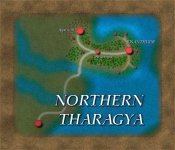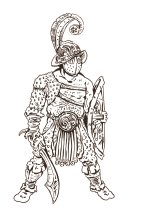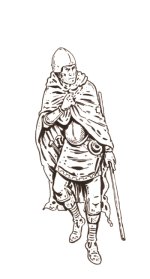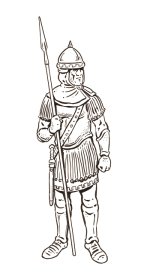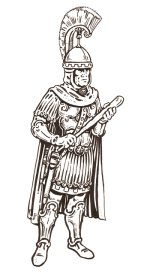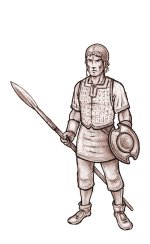Kalamos
Level of Lemon Feather
- Joined
- Jul 13, 2003
- Messages
- 12,947
- Points
- 63
Overview.
Tharagyan Peninsula constitutes the easternmost rim of Ayrova, the Morean mainland.
The irregularly shaped peninsula spans over 200 miles, from Bisanthium, in the northeast, to Invaros, near the Aygosian border, in the southwest.
Its capital city used to be the eponymous Tharagys.
Tharagya progressively fell under Morean law between VII and X century I.R.
Some local lords fought against assimilation. They were eventually crushed.
Most simply accepted to keep ruling, as puppet kings, and turn over part of their revenues to Morea.
In 1066 I.R. Geramorea created a second imperial capital, to support conquest eastward.
Bisanthium became the imperial capital, and it was renamed Maxiamorea, to celebrate Emperor Maxian T'on Aygyros.
The name never caught on.
Economy and Culture.
Tharagya is a fairly advanced, developed region. It is rich with natural resources, but its greatest asset are its ports.
Coastlines are dotted with fishing villages and ports; a considerable wealth is invested in port facilities, and trade is the greatest source of income.
Inland is less well developed: it is due to the older feudal-like structure of Tharagyan power. Local gentry still clings on to older traditions, and pays a token homage to Morean law.
Northern Tharagya is jagged and mostly barren; its poor soil can usually support only sustenace-level small settlements.
Its shores host most of the trading facilities of the region.
Southern Tharagya is fertile, but often flooded with tides.
Its shores host most of the military facilities of the region.
Tharagyan populance is a mixed, stubborn folk.
They are well used to strangers, and they are fairly easygoing - compared to the stern, warlike Talanics.
Religion is a fanciful blend of ancient customs, and newer imperial cult.
Border nobility even worships foreign deities, from the older Varythian pantheon.
Major Cities.
Bisanthium is the largest city, counting over 500.000 inhabitants between the inner city and the smaller industrial settlements, in a 40 miles radius.
As a rough estimate, about half of those are slaves, traders and passengers.
It is a busy, crowded city.
Second in size is Tharagys, the older regional capital.
It is well under 250.000. Most of its inhabitants moved over to Bisanthium, and the city is just a shadow of its former self.
Invaros is the third largest city. Near the Aygosian administrative border, it hosts most of the customs offices of Southern Tharagya.
It is under 100.000 dwellers most of the year. About half are actual residents.
Kaphraktos hosts the main military facility in Tharagya.
It counts between 50.000 and 100.000 souls; most of them are Legionaires in transit. As little as 10.000 are actual residents.
Asperum lies in the mainland, and usually sees only landbound travellers.
It used to be a caravanserai, and now hosts the largest slave market of Tharagya.
During the war military facilities have been quickly implemented.
It vies for the fourth place for size with Kaphraktos, at about 10.000 - 50.000 inhabitants.
Phlagos is the spiritual nucleus of Tharagya. It hosts numerous temples to the major religions, and even some of the minor ones.
Many novices train here.
Since Morean religion does not encourage pilgrimage, Phlagos does not attract many visitors.
Counting the living, about 25.000 reside here. Many, many more, the unliving, in the necropolis.
Tharagyan Peninsula constitutes the easternmost rim of Ayrova, the Morean mainland.
The irregularly shaped peninsula spans over 200 miles, from Bisanthium, in the northeast, to Invaros, near the Aygosian border, in the southwest.
Its capital city used to be the eponymous Tharagys.
Tharagya progressively fell under Morean law between VII and X century I.R.
Some local lords fought against assimilation. They were eventually crushed.
Most simply accepted to keep ruling, as puppet kings, and turn over part of their revenues to Morea.
In 1066 I.R. Geramorea created a second imperial capital, to support conquest eastward.
Bisanthium became the imperial capital, and it was renamed Maxiamorea, to celebrate Emperor Maxian T'on Aygyros.
The name never caught on.
Economy and Culture.
Tharagya is a fairly advanced, developed region. It is rich with natural resources, but its greatest asset are its ports.
Coastlines are dotted with fishing villages and ports; a considerable wealth is invested in port facilities, and trade is the greatest source of income.
Inland is less well developed: it is due to the older feudal-like structure of Tharagyan power. Local gentry still clings on to older traditions, and pays a token homage to Morean law.
Northern Tharagya is jagged and mostly barren; its poor soil can usually support only sustenace-level small settlements.
Its shores host most of the trading facilities of the region.
Southern Tharagya is fertile, but often flooded with tides.
Its shores host most of the military facilities of the region.
Tharagyan populance is a mixed, stubborn folk.
They are well used to strangers, and they are fairly easygoing - compared to the stern, warlike Talanics.
Religion is a fanciful blend of ancient customs, and newer imperial cult.
Border nobility even worships foreign deities, from the older Varythian pantheon.
Major Cities.
Bisanthium is the largest city, counting over 500.000 inhabitants between the inner city and the smaller industrial settlements, in a 40 miles radius.
As a rough estimate, about half of those are slaves, traders and passengers.
It is a busy, crowded city.
Second in size is Tharagys, the older regional capital.
It is well under 250.000. Most of its inhabitants moved over to Bisanthium, and the city is just a shadow of its former self.
Invaros is the third largest city. Near the Aygosian administrative border, it hosts most of the customs offices of Southern Tharagya.
It is under 100.000 dwellers most of the year. About half are actual residents.
Kaphraktos hosts the main military facility in Tharagya.
It counts between 50.000 and 100.000 souls; most of them are Legionaires in transit. As little as 10.000 are actual residents.
Asperum lies in the mainland, and usually sees only landbound travellers.
It used to be a caravanserai, and now hosts the largest slave market of Tharagya.
During the war military facilities have been quickly implemented.
It vies for the fourth place for size with Kaphraktos, at about 10.000 - 50.000 inhabitants.
Phlagos is the spiritual nucleus of Tharagya. It hosts numerous temples to the major religions, and even some of the minor ones.
Many novices train here.
Since Morean religion does not encourage pilgrimage, Phlagos does not attract many visitors.
Counting the living, about 25.000 reside here. Many, many more, the unliving, in the necropolis.
Last edited:



